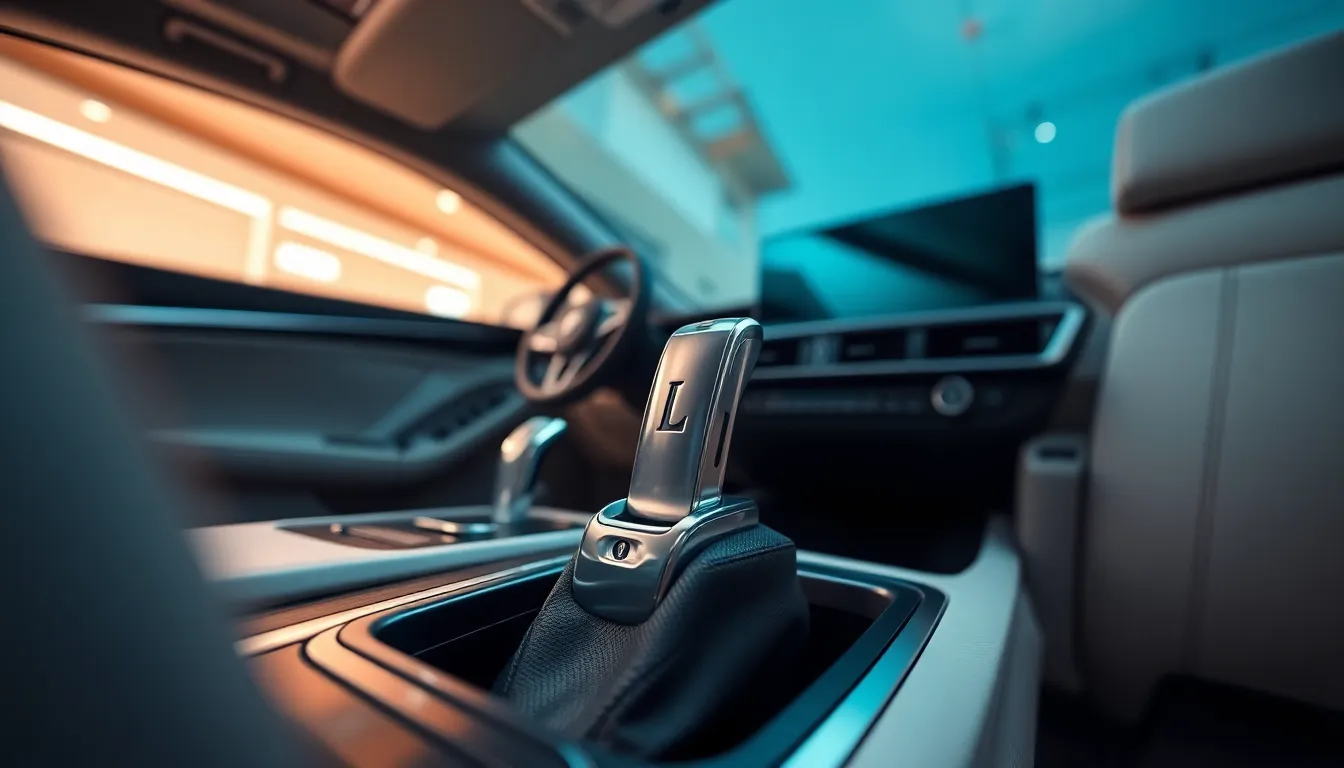Table of Contents
ToggleEver found yourself staring at your car’s gear shift, pondering, “What does L stand for?” You’re not alone. Many drivers have had that moment of confusion when faced with letters that seem to spell out an automotive mystery. Is it for “Limo”? Maybe that’s where cars go to chill? Spoiler alert: It’s actually much simpler than that. Let’s jump into the world of gear shifts and uncover the true meaning of the enigmatic ‘L’. Spoilers ahead, there will be no stretch limousines involved, only smooth driving and better understanding.
Understanding Gear Shift Indicators

Gear shift indicators aren’t just random letters tossed together. They serve the purpose of guiding drivers on how to operate their vehicles effectively. Familiar symbols like P for Park, R for Reverse, and D for Drive help drivers navigate the intricate dance of gear shifting.
Each letter signifies a specific mode the vehicle is in, providing crucial information that can affect performance and safety. Understanding these symbols is like knowing the chords to your favorite song. It makes for a much better performance while keeping things in tune.
The Role of Gear Shifts in Vehicles
Gear shifts play an essential role in how a vehicle functions. Essentially, they control the power output from the engine to the wheels, helping manage speed and acceleration. Each gear serves a different purpose, much like sections of a well-orchestrated symphony.
When drivers shift gears, they adjust engine output to match driving conditions. For instance, the lower gears provide more power for acceleration and climbing hills, while higher gears help with fuel efficiency during cruising. By mastering the gear shift, a driver can improve not only their car’s performance but also their fuel consumption.
What Does ‘L’ Represent?
So what does ‘L’ actually stand for? In the realm of gear shifts, ‘L’ stands for Low gear. Commonly found in automatic transmissions, it signifies that the vehicle will engage a lower gear ratio. This feature enhances engine power while limiting speed, perfect for navigating steep inclines or rough terrains.
When the ‘L’ gear is selected, the transmission remains in low gear, preventing it from shifting into higher gears automatically. This allows for greater control, especially in challenging driving conditions. Remember, this isn’t a gear you engage every day, but knowing when to use it makes a world of difference.
When to Use the ‘L’ Gear
Knowing when to engage the ‘L’ gear can elevate your driving experience from ordinary to extraordinary. It’s particularly useful in specific situations.
- Steep Hills: Using low gear when climbing steep inclines provides the car with the necessary power and torque to ascend without straining the engine.
- Towing: If you’re hitching up a trailer, the ‘L’ gear offers maximum power to help pull without overexerting your vehicle.
- Heavy Loads: Carrying a heavy load? Engage the ‘L’ gear to afford your vehicle a little extra muscle.
- Slippery Conditions: Whether it’s rain or snow, low gear allows for smoother acceleration to prevent wheel spin.
By using ‘L’ in these scenarios, drivers can enhance safety and vehicle performance.
Benefits of Using ‘L’ Gear
The advantages of engaging the ‘L’ gear go beyond just enhancing control. Here are a few benefits that can improve your driving experience:
- Improved Acceleration: Low gear provides more torque, enabling quicker starts from a standstill.
- Increased Control: It grants drivers better control on slippery or uneven surfaces, minimizing the chances of skidding.
- Fuel Efficiency: While it may seem counterintuitive, using low gear can sometimes improve fuel efficiency in certain conditions, especially when going uphill.
- Reduced Strain on the Engine: By avoiding unnecessary gear shifts during challenging conditions, the ‘L’ gear helps preserve engine health.
Common Misconceptions About the ‘L’ Gear
Even though its practicality, there are several misconceptions about the ‘L’ gear. One common myth is that using low gear damages the engine. In reality, engaging ‘L’ in appropriate scenarios is beneficial. The engine and transmission are designed to handle these pressures.
Another misconception involves its utility. Some might believe that ‘L’ should only be used by professional drivers. In fact, any driver can benefit from understanding how and when to use low gear, leading to safer and more efficient driving. Knowledge is power, after all. Knowing your car helps you drive it better.





